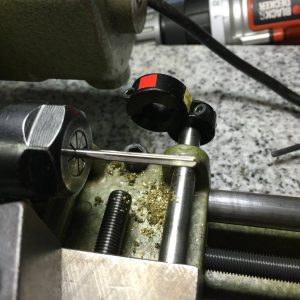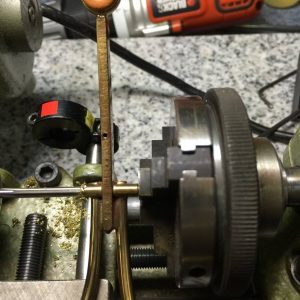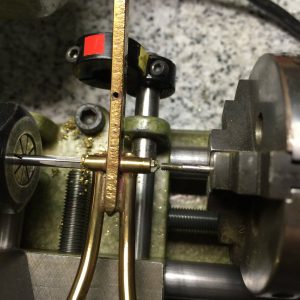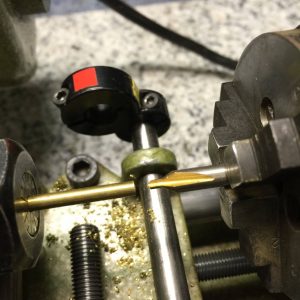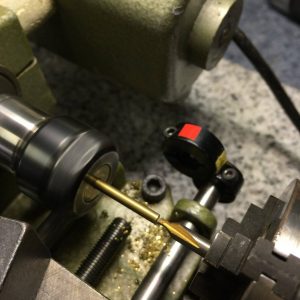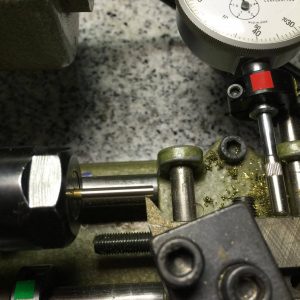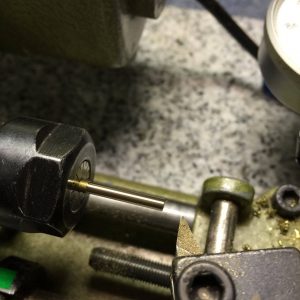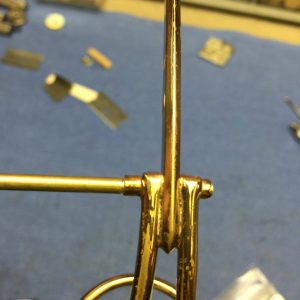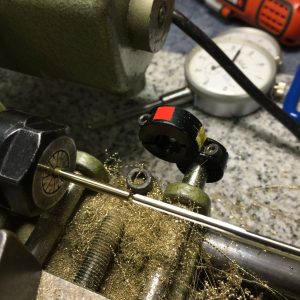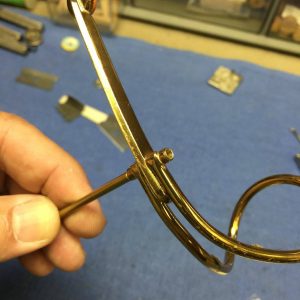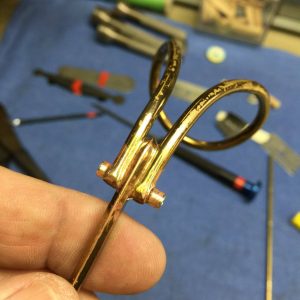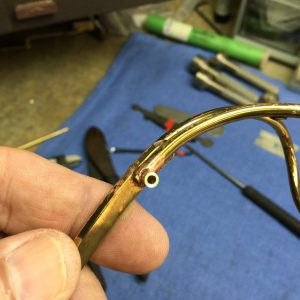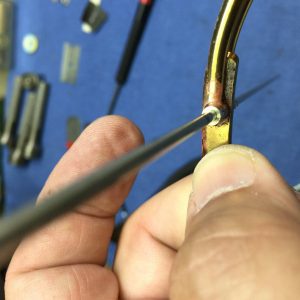This is an advanced repair that can be undertaken when a hinge tube in a saxophone (or other similar musical instrument) has been so worn or has so little expose hinge tube that normal swedging will not fix poor key fit.
The pictures and text for this article have been graciously provided by Larry Gerhardt of Gerhardt Music in Saint Joseph Missouri.
This is a detailed but still rough outline of the procedure, and to undertake this repair you should already be an accomplished repairer with a lot of experience with key fitting- otherwise you will not understand the implied parts that have been left out such as rod making, hinge tube facing, etc.
Original text and photos from Larry below.
———-
I have a long time customer that has several Vito 35 (Johnny Hodges model) and Leblanc Paris System saxes. He travels the country teaching college master classes and symphony guest performing. He sent this Vito 35 to me for a mechanical restoration/re-pad and I last performed this work to in about 6 years ago. Anyway, most of the key-work has held up well and not a lot of that to do this time around, but the neck octave key had an enormous amount of wiggle. There isn’t much tubing that is exposed for swedging and a new hinge rod to fit would be hugely over-sized and would necessitate reaming the tube true (making it VERY thin) and reaming the un-threaded post to fit the rod (again, making it very thin). So, I decided the best course would be to sleeve the tube. I’ve explained in each picture what I’m doing.
